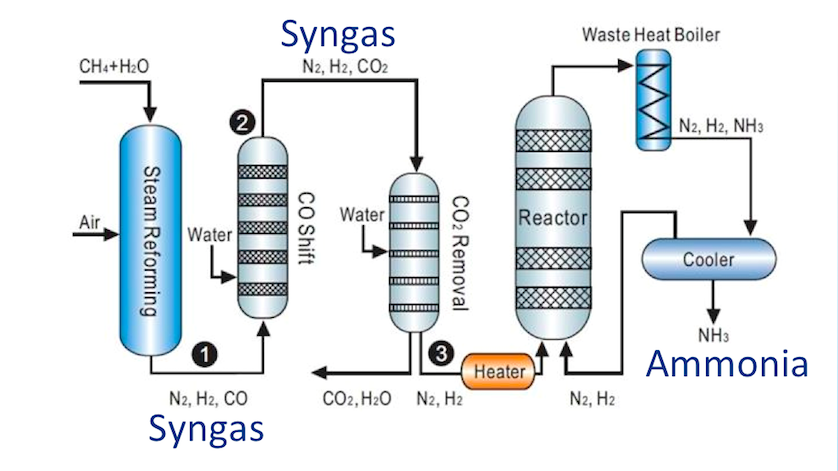Which gas is most commonly used in the production of ammonia?

- Primary Gas Used: Hydrogen is the most commonly used gas in the production of ammonia.
- Source of Hydrogen: Hydrogen is typically produced from natural gas (methane) through a process called steam methane reforming (SMR).
- Ammonia Production Process: The production of ammonia primarily involves the Haber-Bosch process, which combines hydrogen and nitrogen gases under high pressure and temperature in the presence of a catalyst.
- Nitrogen Source: Nitrogen, the other essential gas in ammonia production, is extracted from the air using methods such as cryogenic distillation or pressure swing adsorption.
- Reaction Conditions: The Haber-Bosch process operates at pressures ranging from 150 to 250 atmospheres and temperatures between 400°C to 500°C.
- Catalysts: Iron catalysts, often with promoters like potassium and aluminum oxides, are used to enhance the reaction efficiency between hydrogen and nitrogen.
- Feedstock Efficiency: Natural gas is favored due to its high hydrogen content and relatively lower cost compared to other hydrogen sources.
- Energy Consumption: Ammonia production is energy-intensive, with the steam methane reforming step being the most significant energy consumer.
- Environmental Considerations: The production of hydrogen from natural gas generates carbon dioxide as a byproduct, contributing to greenhouse gas emissions.
- Ammonia Uses: Ammonia produced through this process is primarily used as a fertilizer in agriculture, but it also serves as a precursor for various chemicals and industrial applications.
Created by: Salasar Carbonics
Recommended





Comments